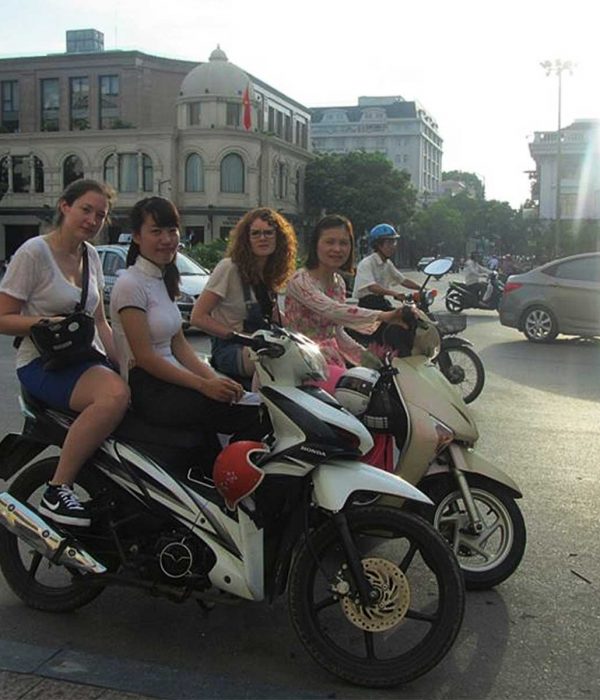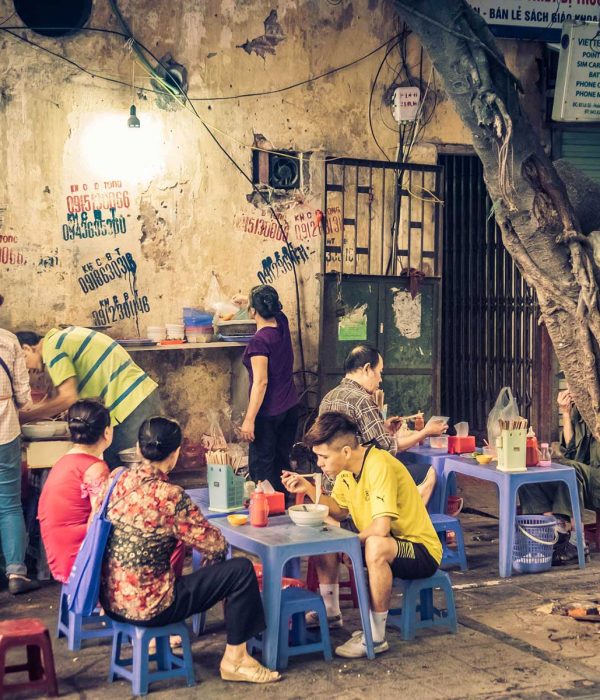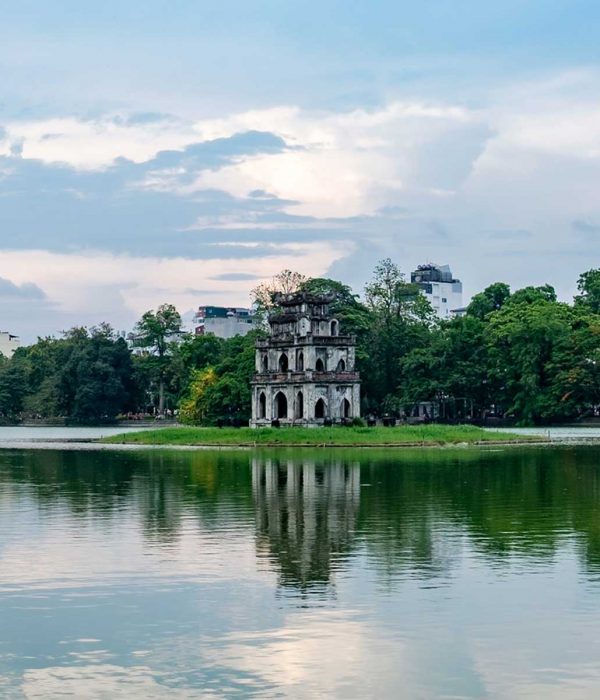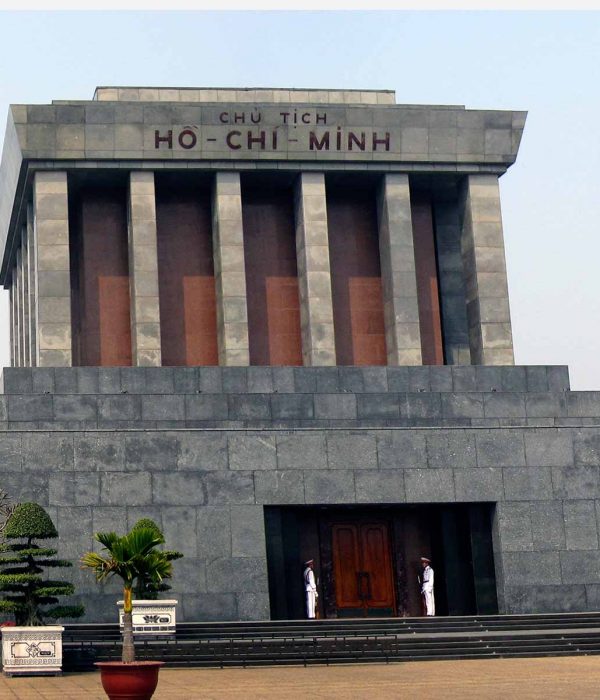The Old Quarter of Hanoi lies north of Hoan-Kiem Lake, clamped between the former Citadel and the Red River. The Dong-Xuan Market and the Long-Bien bridge form the northern boundary. It is an attractive area with narrow, deep houses, shops and with busy traffic of motorbikes, mopeds and cyclists. The old quarter also has a large number of budget hotels, travel agencies and travelers’ cafés.
The district dates from the 15th century and is the commercial heart of the city. The district consists of a twist of narrow streets, called hang in Vietnamese. Originally there were 36 hang. Every street sold its own specialty. The names of the streets corresponded to the professions of the craftsmen or to the merchants’ products. There was a cotton street, silk street, hemp street, fish street, jewelers street and a lacquer street. This specialization strongly reflects the guilds of medieval Europe. The street names now no longer indicate the occupations of the residents, but most streets still have the sale of one or a few items.
Walk through the Old Quarter
The best way to taste the atmosphere of this shopping district is during a walk. The Hang Gai used to be the sail makers’ street, but is now known as the Silk street and is one of the most touristy streets of the district. Besides silk there are souvenirs like masks and water puppets for sale. The Hang Quat and Hang Ma are the most Chinese streets, with the red banners with embroidery and Chinese characters, lanterns, porcelain and house tents as eye catchers. Also offering money is sold: this counterfeit money is in dollars and dong.
What to visit in the Old Quarter
The Dong-Xuanmarkt is definitely worth a visit. This market – housed in a three-storey building with surrounding stalls – is the largest of the Hoan Kiem district. The market offers a wide range of goods and serves as retail and wholesale. One sells (fake) clothing, bags and textiles. There are separate sections with dried fish, mushrooms and candied fruits. Stalls behind the hall sell exotic animals in addition to tropical birds, dogs and cats like geckos (a kind of salamander) and pythons.
In the middle of the famous Old Quarter lies the small Bach Ma temple. It is reportedly the oldest temple in Hanoi. It was originally built by Emperor Ly Thai To in the 11th century but much of the current structure dates back to the 18th century. Upon entry you walk through beautiful old wooden doors that adorn the pagoda. Inside you will find a white horse statue that emperor Ly Thai To brought to this location.
Hang Bac, the street of the silversmiths, is one of Hanoi’s oldest streets. In stores, silver and gold jewelry are for sale, made by craftsmen from families who live here for generations and designers from the province. Do not forget to visit house no. 102. Accessed by a narrow alley and wooden staircase, there is a very colorful temple in a house to admire.
At 42-44 Hang Bac is the Dinh Kim Ngan Community House. This building from the early 19th century was originally intended for trade in silver. After the silver trade moved to Hué at the end of the century, this place was used for exercising religious practices.
Ma May, north of Hang Bac, was the bamboo and rattan street. Here at No. 87 is a beautifully restored traditional merchant’s house from the late 19th century. The rooms around the two courtyards are decorated with antique furniture. Upstairs is an impressive family altar. In the house there is crafts for sale and usually a calligraphy artist working.
Anyone who needs a pair of new shoes can not go to anything better than Hang Dau. In the shops, shoemakers make sandals, slippers and other footwear.
Hang Dao and the extended Hang Ngang change from Friday to Sunday in a massive evening market, with counterfeit branded goods, clothing and shoes. The market is definitely not only for tourists, because locals appreciate a bargain too.





